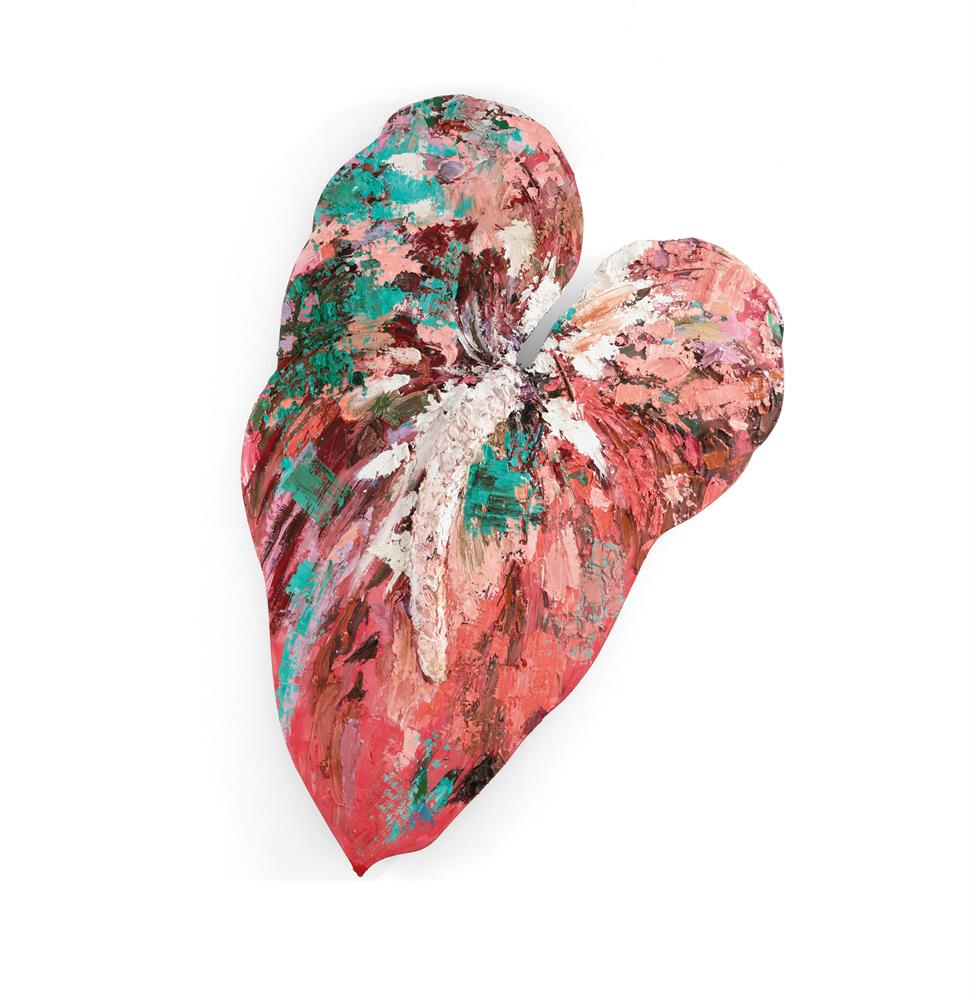
Vorderberg/ Gailtal 1942 - 2022 Vorderberg/ Gailtal 1942
Anthurium Blossom
Acrylic on hardboard
approx. 195 x 127 cm
Provenienz:
Galerie Carinthia, collection Bohunovsky Bärnthaler, 1991
Private collection, Carinthia
Literatur:
Cornelius Kolig. Flush, Neue Arbeiten für das Paradies, 1985-1990, Klagenfurt 1990, ill. p. 170
Cornelius Kolig, a consistent, uncompromising and visionary exponent of Austrian post-war modernist art, died in his ‘Paradise’ in Vorderberg in the lower Gail Valley in 2022. He was 80. Located since 1979 in the most southerly part of Carinthia, close to Italian border, built on a 5,000 square metres plot, ‘Paradise’ is nothing less than the impressive artistic legacy of two-time Venice Biennale participant Cornelius Kolig. No paradise in the religious sense, rather a sensory hortus conclusus, a unique, spatially complex life and total work of art, determined by its location, a workshop, production place, display depot, archive, cemetery and garden all in one. In 1970 and 1972 Cornelius Kolig’s art was presented at the 35th and 36th Venice Biennale, and in 1975 Kolig was one of three Austrian representatives at the XIII São Paulo Biennale. The performative approach that runs like a thread through Kolig’s entire oeuvre is best exemplified by the artist’s pictures of clouds, mountains and flowers: video feeds were transmitted to a monitor in the workshop via an external camera installed outdoors, the visual snippets of which were then interpreted on the canvas by Cornelius Kolig. From 1980, flowers and butterflies in ‘Paradise’ functioned as pervasive sources of stimulation for Cornelius Kolig’s painting (in the space). Picture-like flower reliefs, mostly composed from colour-intensive, fleshly, though all odourless, artificial flower forms, point to the basic decorations found in traditional paradises. From 1986 to 1990 a series of pallet pictures, anthurium blossoms, anthurium pallets, heart pallets and insect wing pictures was created in glowing colours; intoxicating, beguiling signals as an advert for the fertilisation process. These pictures have the contours of large pallets, blossoms and wings, yet are actually sculptures. The picture medium is always a panel which is stiffened by means of wooden slats. The exhibited picture ‘Anthurius Blossom’ is a work of great power and already highly rare. It is illustrated in the book ‘Cornelius Kolig “FLUSH” neue Arbeiten für das Paradies 1985–1990’.
